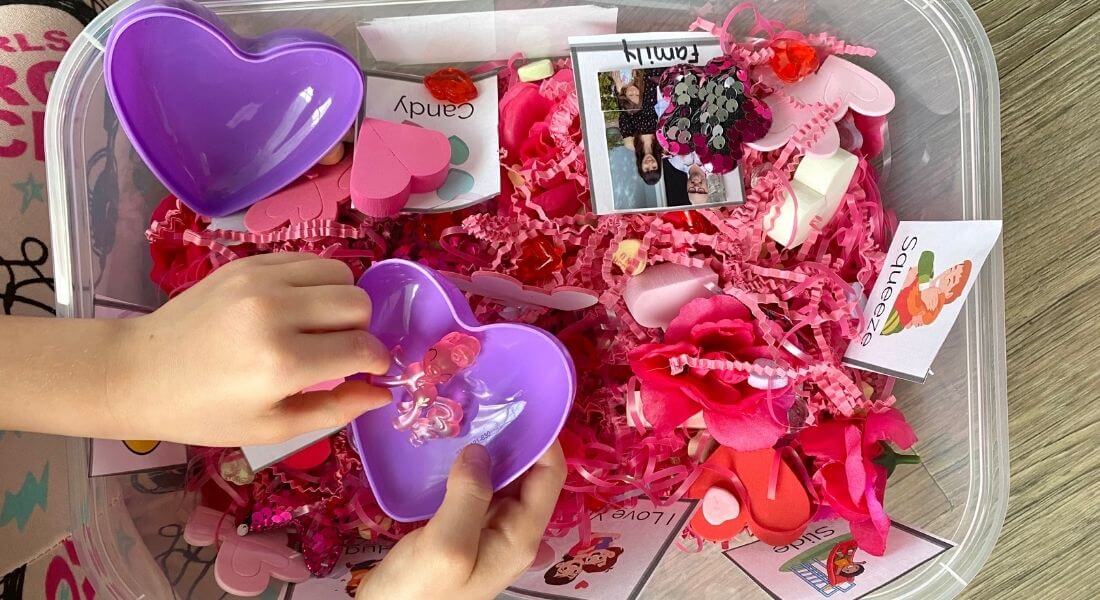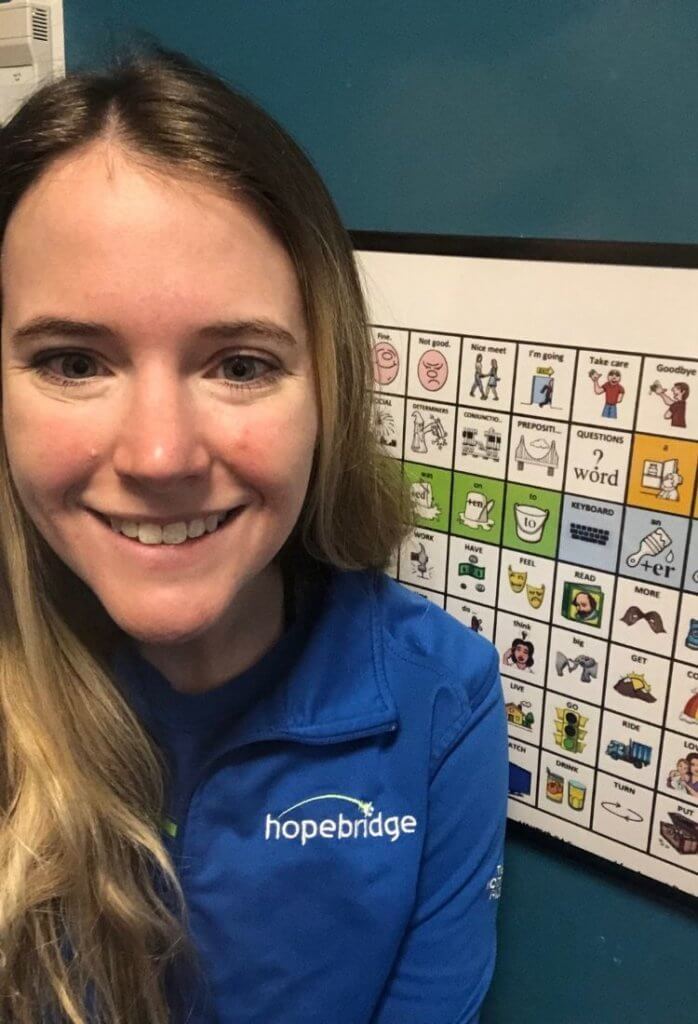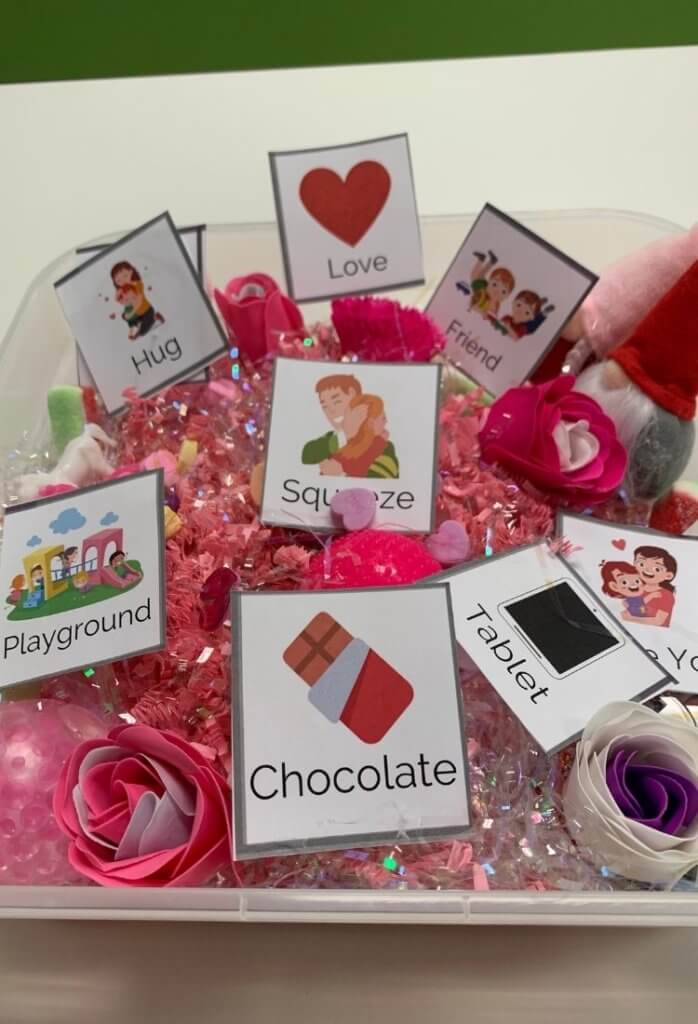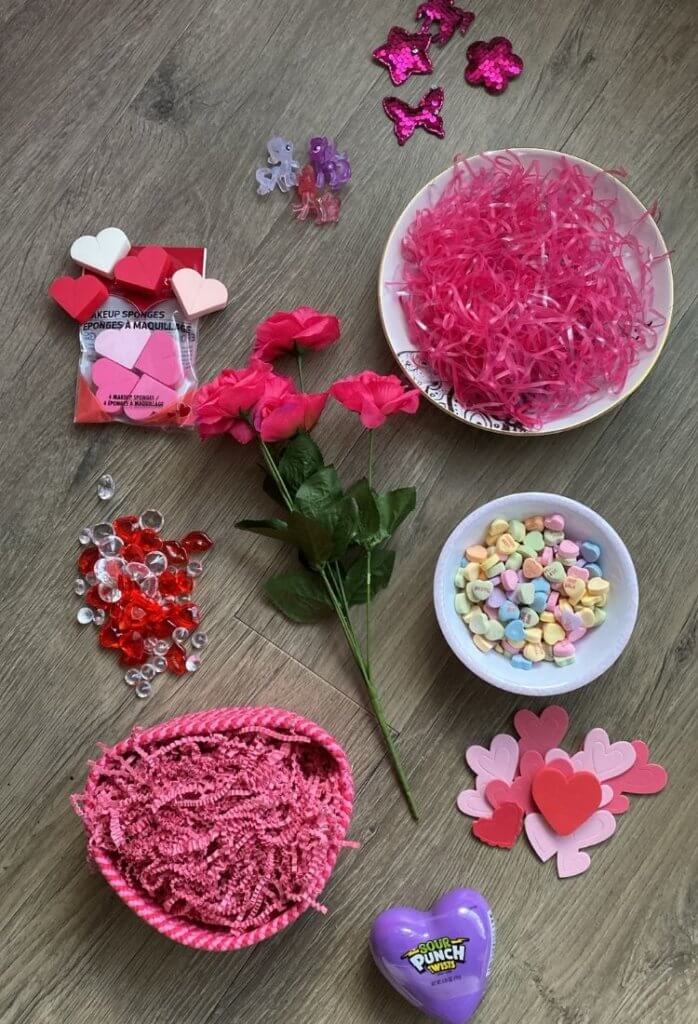Valentine’s Day Communication Tools and Sensory Activities for Kids with Autism
February 10, 2022
February 10, 2022

“I love you” is a phrase so many of us long to hear, starting at a young age, all the way until we have several younger generations looking up to us. Whether it be from a high school crush, a child, or a pet expressing it through barks and puppy dog eyes, we all want to feel loved.
At Hopebridge Autism Therapy Centers, we know it’s important to separate “feeling loved” with hearing “I love you.” As incredible as it is to hear those three little words, our autism families know it isn’t always realistic, or necessary, as our kiddos can often show their care and affection in even more powerful ways.
This Valentine’s Day, we want to reinforce that idea with tools and activities to help your little ones communicate their adoration in whatever way works best for them. True love knows no boundaries, after all!
To help you and your child celebrate Valentine’s Day, Hopebridge Speech-Language Pathologist (SLP) Lindsay Ross from our Westlake, Ohio therapy center created a set of fun communication tools for children with autism spectrum disorder (ASD) to let others know who – and what – they wish would “be mine.”

We all want to hear “I love you,” but “like” and “love” are abstract concepts that are difficult to learn. How can you define, “like”? We can read the definition, but in terms of teaching “like” and “love”—they are feelings. Lindsay reminded us that these words may carry so much meaning to us, but can be tough to teach to others because they mean something different to everyone.
We can still work on teaching the words that describe these feelings by incorporating other words around their preferred items, as well as those that cover ways in which they may share their feelings.
A lot of our kiddos are reinforced by hugs and squeezes, so these are good words to work on during Valentine’s Day.
“One child I work with will lace his fingers through mine and squeeze it. Although he may not verbally tell me how he feels, I know this is the sweetest gesture he can offer me,” said Lindsay.
Other times, children who are non-speaking and/or on the spectrum show affection by giving us or showing us the things they love, like a tablet, slide, ball or other toy. Or, they may show it by watching their favorite TV shows with us or repeating lines from them, which we can use to meet them where they’re at. For instance, if they repeat something from “Mickey Mouse Clubhouse,” you can reinforce the communication by telling them, “Thank you for sharing Mickey with me. I love Mickey.”
Keeping all of this in mind, we created a sheet of symbols and words that may be applicable to your child this Valentine’s Day. These printable pictures have a wide range of uses and are beneficial to children whose skills fall along a spectrum of developmental levels. They can – and should – be personalized for the vocabulary that is the best fit for them and your family. You can use individual words, as well as pair them together to create more complex phrases beginning with, “I want …” or “I like …”
Choose whichever words and pictures your child uses and those you want to help them learn at this moment. You don’t need to practice all of the words included on the sheet; only use those that make sense to your child.
Core vocabulary makes up about 80% of language for most of the children we serve. This includes words like “need,” “want,” “eat,” “like” and “love.” Fringe vocabulary – which includes words that are specific to each individual kiddo – is also important. You can incorporate your own words or pictures to the mix, such as photos of important people in your child’s life (you, siblings, grandparents, etc.) or other symbols or pictures they use with Picture Exchange Communication System (PECS) or on their devices. Include the names of items your child likes and loves to further individualize it.
Though these pictures we created are not exactly like those you will find within AAC apps like LAMP Words for Life or PECS, they are intended to aid in building association, generalization and more receptive and expressive vocabulary.

Lindsay worked with us to develop visual aids that can be customized depending on the child’s developmental level and preferred items. By utilizing these tools, parents and therapists can help their kiddos participate in Valentine’s Day while encouraging them to build upon their language skills and actively engage with others.
“We practice a lot in our centers and help them learn skills with one partner in a set condition, but we also need to give them opportunities to use their language in other scenarios,” said Lindsay. “When it comes to language acquisition, the more people we give them the opportunity to communicate with, the more practice they will get using it in real-life situations.”
Jane Korsten of Quality Indicators for Assistive Technology Services (QIAT) noted that if a child begins using a different symbol set through AAC and only has exposure to it two times a week for up to 30 minutes each, it will take that child 84 years to have the same experience with their symbols than a typically developing child has had with the spoken word within their first 18 months (Jane Korsten, OTR, QIAT ListServe, 4/4/2011). By incorporating activities like these into your toolbox, you can assist your child in achieving it much sooner.

Sensory bins are almost always a hit, but this one focuses on communication. To start, fill your bin with themed sensory materials you think will interest your child. Dollar stores and the Bullseye Playground & Dollar Spot at Target are great resources for these items. Holiday-specific materials are fun, but also consider items that can be reused for future sensory play. Ideas include:
Once you have the base of the sensory box ready to go, add in the main ingredient: your vocabulary visual aids!
Place the pictures in the sensory bins and encourage your kiddo to find them as they are playing with the items in the bin. Practice modeling language as they sift through the box, suggesting they “find,” “open,” “close” and “feel” specific pieces.
Children who attend speech therapy or applied behavior analysis (ABA therapy) at Hopebridge may already be familiar with tools like these, but working on them at home can increase generalization … and entertainment!
Here are some tips to keep in mind when working on communication with your child:
Once a child has a way to communicate their needs, wants, thoughts and feelings, their world opens. Hopebridge’s interdisciplinary 360 Care services exist in part to make that happen. For more information on Hopebridge’s complementary programs that combine autism testing, speech therapy, applied behavior analysis (ABA therapy), occupational therapy and more, please fill out the online form to take the first step to give your child a new life full of opportunity.
*Informed consent was obtained from the participants in this article. This information should not be captured and reused without express permission from Hopebridge, LLC.
Parenting Resources
December 30, 2024
4 Autism-Friendly Ways to Celebrate New Year’s Eve at Home
Parenting Resources
November 06, 2023
13 Children’s Books About Autism and Differing Abilities
Parenting Resources
June 13, 2023
What to Expect from Autism Testing: The Process for an Autism Diagnosis for Children
Parenting Resources
September 20, 2022
Is Your Child Ready for School? 5 Signs to Consider